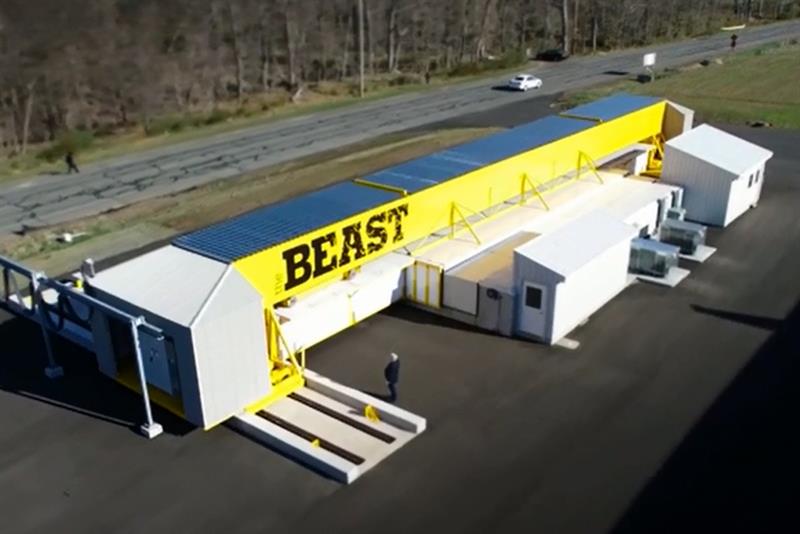Philip Charatz, president and CEO of Fuji Electric Corp. of America, said: “The VG Drive is capable of operating 24/7 without fail, and will allow for uninterrupted research as these critical experiments are conducted.”
Designed and constructed through a collaboration between Rutgers University’s Centre for Advanced Infrastructure and Transportation (CAIT) and Applied Research Associates (ARA), the laboratory provides a condensed view into the effects that the environment and heavy traffic have on full-scale bridge decks and substructures that take the brunt of wear and tear. Test results will give bridge owners more confidence in decisions relating to materials and rehabilitation methods.
“The validity of our testing depends on maintaining tightly controlled parameters. We can’t afford any component in this facility to fail or it will throw off the data,” explained Andrés Roda, CAIT senior research engineer and BEAST operations manager. “The answers we get from the BEAST can potentially save billions of dollars in infrastructure costs, so there’s a lot at stake.”
Fuji Electric’s 460V three-phase 132KW VG Drive is a high performance, low voltage systems drive designed with advanced technology, typically used in sophisticated applications requiring high performance and low maintenance. The driving force of the BEAST’s carriage is a winch built by Foley Material Handling. Including a 400HP Continuous Duty Motor, the drive train accelerates the test carriage from 0 to 20mph in a distance of 20ft. The carriage then travels 60ft at constant velocity before decelerating to zero in 20ft and reversing direction.
Brad Herron, Electrical Department manager of Foley Material Handling, said: “The continuous operation of this facility demands robust, rugged equipment that can withstand the stress of 24/7 experiments, and Fuji Electric delivers on that requirement.”
 The Bridge Evaluation and Accelerated Structural Testing (BEAST) lab, located at Rutgers University in Piscataway, New Jersey
The Bridge Evaluation and Accelerated Structural Testing (BEAST) lab, located at Rutgers University in Piscataway, New Jersey







